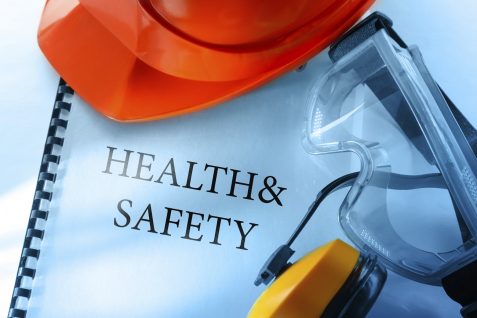Top 5 Health and Safety Topics

Talking about health and safety topics with your team can be a laborious task. Not all members of your team will share your enthusiasm for knowledge and success and it can make you feel unsure if you’re connecting with the team. Focusing on subjects that directly relate to their daily duties helps your team members to focus on the subject at hand. They will be more likely to remember what you say and understand its importance when they take a personal interest in the topics.
The following is our list of topics that can help engage and inform your safety team at your next meeting.
#1 – Workplace Ergonomics
Good ergonomics are one of the most relatable health and safety topics that you can speak on. Repetitive actions like lifting, bending, twisting and sitting can all affect a person’s performance both inside and outside of the workplace. Making sure that your team fully understands the injuries associated with poor ergonomics and how they can be prevented is important. Consider consulting an expert in the field, a doctor or chiropractor can provide a fresh perspective on the topic. This can also break up the monotony of safety discussions and put a higher value on the importance of good ergonomics. OSHA is also a great resource to consult for ergonomic information.
#2 – Personal Protective Equipment
Your team uses PPE in the workplace on a daily basis which makes this topic very easy to talk about. Consider using visual aids during your discussion and bring an assortment of PPE items that your team uses every day. Speak about the benefits of properly using PPE, how to locate flaws in equipment and any other information that will help to keep them safe. Safety videos can also provide excellent information while visually demonstrating the point. WorkSafeBC has a YouTube channel full of great videos to enhance your next safety meeting.
#3 – Emergency Preparedness
Emergency preparedness will allow your employees to know exactly what to do in the case of emergency within the workplace. Identifying safe areas, meeting places and the quickest routes to safety are a good starting point. Communication is key during an emergency situation, be sure to address communication channels that will be used during these situations.
However, planning and executing are two very different things, make sure to go beyond just talking about emergency preparedness. Conduct drills on a regular basis to ensure your employees are able to act under the pressure of a real emergency. Constructing an emergency preparedness plan is a good way to get everyone on the same page. OSHA has a great resource to help you with this objective.
#4 – Heat-Related Stress
Heat risks are a serious issue that can threaten a person’s life if not addressed. Believe it or not, working in an environment that’s above 70 degrees Fahrenheit can present heat risks. However, your employees may not fully understand the risks associated with working under these conditions.
Requiring mandatory water breaks while working in hot conditions is a good idea to start with. Educating your team on the signs of heat illness is a must. Not everyone will inherently recognize when they’re working too hard or becoming too hot, increasing their chances of succumbing to heat stroke or exhaustion.
You can also encourage your team to download this helpful app from OSHA / NIOSH to keep your team safe while working in extreme temperatures.
#5 – Winter Weather
If you live in an area that receives wintery weather at least once a year, it’s a good idea to talk to your team about making good choices when exposed to winter elements on and off the clock.
Bad winter weather conditions can create slippery surfaces and extreme cold. Movements can be limited because of bulky clothing and gear. Travel times to and from job sites can be longer.
Even if you don’t have employees working outdoors, this is a great health and safety topic to keep them safe when traveling to and from work. You might be able to prevent car accidents, slips, or other disasters that could result in time away from work.
How to Keep the Conversation Going
Health and safety are serious business, but that doesn’t mean you can’t make them fun. Remember that talking about emergency responses or workplace ergonomics aren’t everyone’s cup of tea, so try turning bland information into an exciting or humorous narrative. At the very least, it will earn employee attention and help them relate to the subject.
Make sure to check out our list of the 7 Useful Health & Safety Apps on the Market
